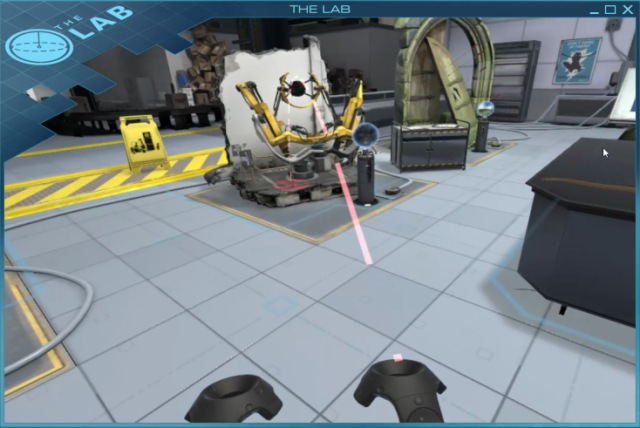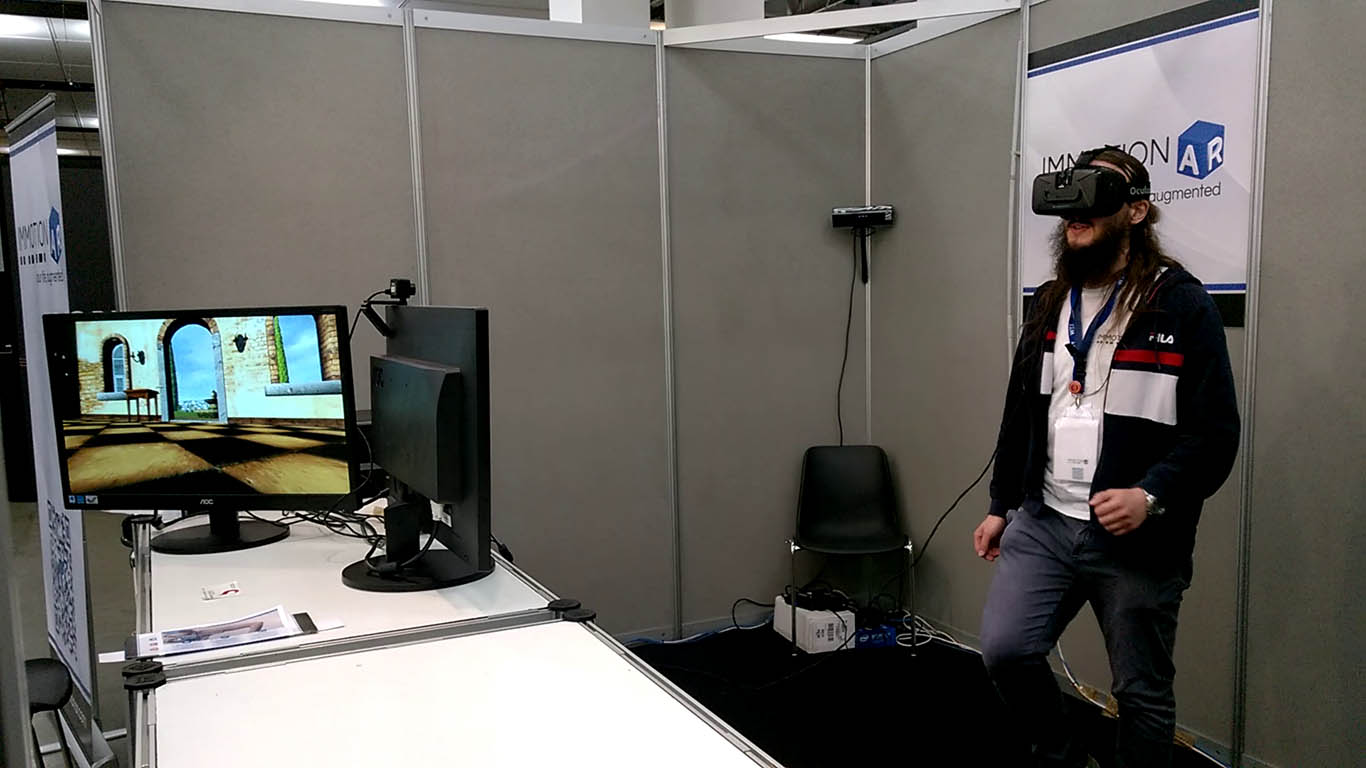Virtual reality locomotion choice in games is not an option
Locomotion is one of the biggest issues in virtual reality: lots of alternatives with pros and cons for each choice have been provided, like:
- no locomotion (like in GearVR): just stay in a fixed place and don’t move, like when you look 360° videos;
- standard locomotion: you use keyboard or gamepad to move forward… very easy to understand but leads to motion sickness;
- teleportation (introduced by Vive): you just move immediately from one place to another. There’s no sickness, but it’s absolutely not natural;
- walk-in-place (like the one used in our full body VR solution ImmotionRoom): you move forward looking at the direction you want to move to and then walking in place in the real world to walk in the virtual world. This is smart since reduces a lot motion sickness, while being natural;
- Freedom locomotion system: like walk-in-place, but you define where to go using your thumb on the VR controller.
- Lots of others: really there are a bazillion locomotion options out there! Every day some new mechanics get invented

There’s a lot of debate on online communities about the best locomotion option for game (spoiler: there’s no best option yet :D), especially because there are lots of people that hate locomotion because of how it breaks immersion. These people claim that they have VR legs, so they don’t suffer from motion sickness, so they want the ability to move with standard locomotion and live a more immersive locomotion method. They ask only one thing: “give the user the ability to choose the locomotion mechanic he/she prefers”. As a developer I thought it was a smart requirement to be fulfilled and I was a great advocate of it. Until I found this reddit post. After this I ask myself “Is offering locomotion options really an option?” and I answer myself “no”.
The difficulty is not even implementing multiple locomotion mechanics: some of them are really easy to implement (I think about the standard locomotion using keyboard) or are already implemented in some VR toolkit (like VRTK). So, from a developer standpoint, this is really ok.
The problem is from a game designer standpoint. My friend Massimiliano (Max) Ariani is a game designer (he helped us in designing our Hit Motion game) and taught me a bit of this job. Have you ever tried making a game by yourself and then discoverying that it was too easy or too hard? Or that its control scheme was unusable? Or that players after 10 minutes became un-interested in the game? Well, the game designer is that guy that is responsible in avoiding all of this. Through his experience, some experiments and some calculations, he’s able to make a game idea a game that is actually worth playing. Everyone needs a great game designer (everyone needs Max, then). Every detail is crucial for a game designer… and locomotion in VR is not a little detail.
Being able to move teleporting from one place to another is completely different than moving in place to move in VR. First mode is less natural, but it is surely faster (you can move ISTANTLY from one place to another) and less tiresome (just a button press instead of moving your legs). This means that, for example, an experience made with walk-in-place should last less (or the player would end up sweating a lot) and should involve only movements on a quasi-planar surface (a surface you can walk onto). Teleportation, instead allows you to move quickly everywhere, so you can move super-fast even in a big world with lots of hidden places. So, how can you design an environment that supports optimally both? Furthermore, defining the game difficulty becomes hard, too: an action game is surely easier with teleportation, since you can move everywhere, dodging bullets and confusing enemies, while with walk-in-place you’re super-slow… so how can you define a game that is the same to be played with both locomotion ways? You can’t… since they’re too different. You can design an experience that is not-terrible for both locomotion modes… but why publish a mediocre game?
Problems get even worse with multiplayer. If you’re in a multiplayer shooter game, the guy with teleportation can easily move for all the map dodging bullets and getting lots of powerups, while the walk-in-place guy would be so slow that he would die so many times that in end he would die even in real life (like in The Matrix). It’s impossibile for a multiplayer game to be fair this way (unless you separate rooms by locomotion type… which can actually be an option).
Surely there are exceptions where various locomotion options are a viable choice (for example in a social world you only care about talking with people, so every locomotion mode is ok), but most of the times you can’t make a great game with lots of locomotion options. The best is to take ONE locomotion type and optimize the game for it. People will complain, but it’s better to have 50% people happy for your great game and 50% sad, than having 100% not-so-happy.
What’s your opinion about it? Do you agree with this? Let me know! (And as always, like and share!)
Disclaimer: this blog contains advertisement and affiliate links to sustain itself. If you click on an affiliate link, I'll be very happy because I'll earn a small commission on your purchase. You can find my boring full disclosure here.



